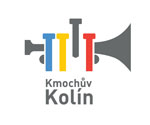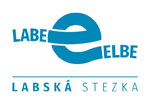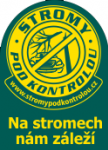III. On the Zálabí bank of the Labe
From Práchovna (Powder tower) we will continue to Veltrubská street which is quite busy. The street will lead us to the edge of the city where the new Jewish cemetery is located in the housing development area on the left bank of the river. The cemetery was built in 1886-1887. We will not find here so many gravestones in the traditional form, the gravestones are mostly influenced by non-Jewish cemetery art – not only in the material and decoration but also in the engravings where apart from Hebrew we can also see German and also a little Czech. If you go inside, you will see graves of numerous honourable members of the Jewish community. The most significant are the graves of two rabbis – Josef Gugenheimer and his son Rafael. Your attention will surely be attracted by the magnificent gravestone of landowner Bernard Mandelík. We can also find the grave of a local merchant Filip Kafka, the uncle of the famous writer Franz Kafka. An observant visitor will notice names of other famous families – the Petscheks, the Saudeks or the Poláčeks. Visitors can also notice the memorial of holocaust victims which was ceremonially presented to public in 1950.
The educational path Borky starts just a short way from the cemetery (near the AFK football stadium). The tour of about 4.6km has ten stops. In the wet places (the remnants of originally much vaster flood plain) we can find alder trees, in the sandy elevated areas there we will find pine trees with oaks. From other types of trees let´s name an ash tree, a linden tree, a maple tree and a larch. In the wet places we will find also a birch tree, an elm tree and a hornbeam. From fauna, visitors can see a lot of insects and birds. In this type of mixed forest we can count more than 80 species because the place is a suitable wintering site. The way leads around the dog shelter. Other interesting things to see are the sand dunes formed during the Ice Age. Nowadays they are covered by pine woods. The educational path makes a circle and it takes approximately 2 – 2.5 hours, depending on the speed and frequency of stops.
David Bárta/Town information centre
























 Máte zájem dostávat nejnovější zprávy přímo do vaší e-mailové schránky?
Máte zájem dostávat nejnovější zprávy přímo do vaší e-mailové schránky?